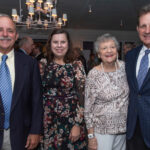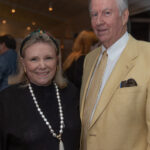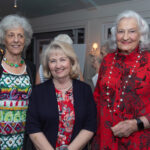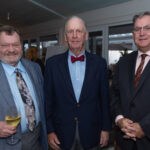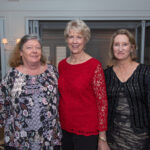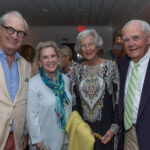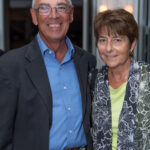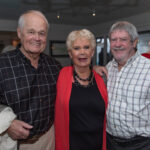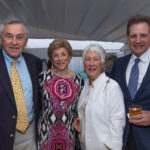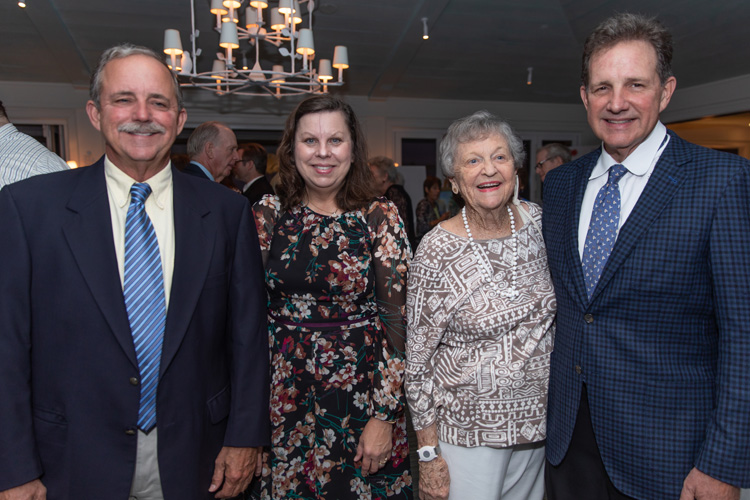
Members and supporters of the Old Vero Ice Age Sites Committee dug in last Wednesday evening at the Riomar Beach Club for their annual excavation celebration, and this year’s event – dubbed Dig Old Vero – presenting the Sexton Site was a real showstopper.
“The heart of this group is learning more about the history of Vero Beach,” said Randy Old, OVIASC board chairman, thanking everyone for their support of the mission of the nonprofit to preserve and excavate Ice Age archaeological and paleontological sites in the county and to promote a greater understanding of their contents and history.
“We want to celebrate Randy and Frances Sexton this evening,” he added. “Not only have they let us use their property to excavate, but they also took a real interest in it.”
The Sexton site, a 3-acre hammock, was selected after an extensive, two-year, large-scale coring project to locate potential archaeological sites, under the direction of geoarchaeologist Frank Vento.
According to OVIASC literature, the area, which has elevations above the waterline, attracted animals and humans for thousands of years and is “the only site in Florida that has evidence of Late Woodland (c. AD 500-1000) and Protohistoric (post AD 1000 to Spanish arrival and later) component or occupation.”
As guests dined under a tent overlooking the beach on a dinner featuring a “prehistoric” meal of mixed flora salad, tenderloin of mammoth steak, Pleistocene grains, extinct vegetables and an Ice Age surprise, they heard from Kyle Freund, Indian River State College anthropology professor, about the work conducted last year and their plans for the upcoming dig.
“‘We are but the most recent inhabitants of a long history of occupation in this region,’” said Freund, borrowing words from OVIASC principal investigator James Adovasio. “That’s really what OVIASC is all about: illuminating that interesting history.”
Of the Sexton site, Freund noted that “braving the sun, the rain and the bugs, we were able to dig a series of shovel test-pits across the southern half of the hammock.”
Testing revealed a concentration of artifacts on the western half of the site, including a large quantity of bones. Among them were remnants of what people were eating, such as deer, turtles, fish and birds. Prehistoric pottery and coral artifacts originating from the west coast of Florida were also found.
“This evidence suggests the site served as a residential locality as early as 500 B.C. There is additional evidence of a Seminole occupation of the hammock in the 19th century, further supported through our pollen analysis, that revealed the presence of Seminole squash, and evidence of fire clearance for planting that occurred under the leadership of Tom Tiger of the Cow Creek Band of the Seminole Tribe of Florida,” said Freund.
He added that work will continue this summer at the Sexton site, with hopes of “disentangling this prehistoric occupation from the Seminole. The prehistory of this region is woefully understudied, and the Sexton site has the potential to address important archaeological questions about what life was like here thousands of years ago.”
The Old Vero Sites exhibit can be viewed at the Brackett Library at IRSC. For more information, visit oviasc.org.
Photos by: Denise Ritchie
Click HERE to see more or buy photos
- Randy and Frances Sexton, Eleanor Sexton and Bobby Sexton
- Cheryl and Nicholas Roseland
- Barbara Brewer, Stan Bachmeyer and Elsebeth Sexton-Stryker
- Patty and Ron Rennick
- Carol Fennell with Nick and Logan Geeslin
- Mary Singer, Pam Cooper and Helen Post
- Jeff Nall, Randy Old and Casey Lunceford
- Susan Pratt, Mary Graves and Peggy Lyon
- Anne Dunn, Jody Old and Nat Jackson
- Kyle and Katherine Freund
- Jim and Laurie Carney with Betty and Charlie Caravati
- Debbie Crum, Kathy Fennell and Kim Beckett
- Al and Nancy Senesi
- Roger and Ann DeVore with Robert Pratt
- Rody and Tommie Johnson with Toni Hamner and Bobby Sexton

